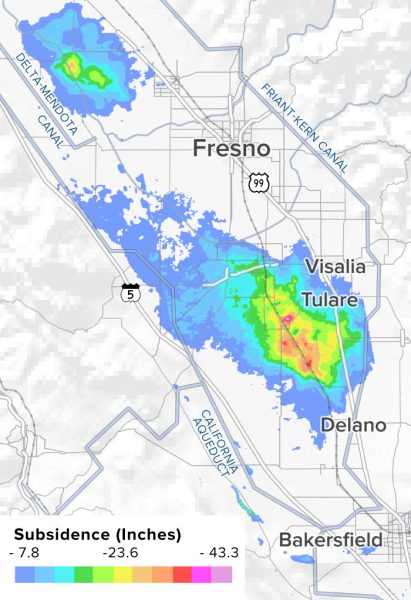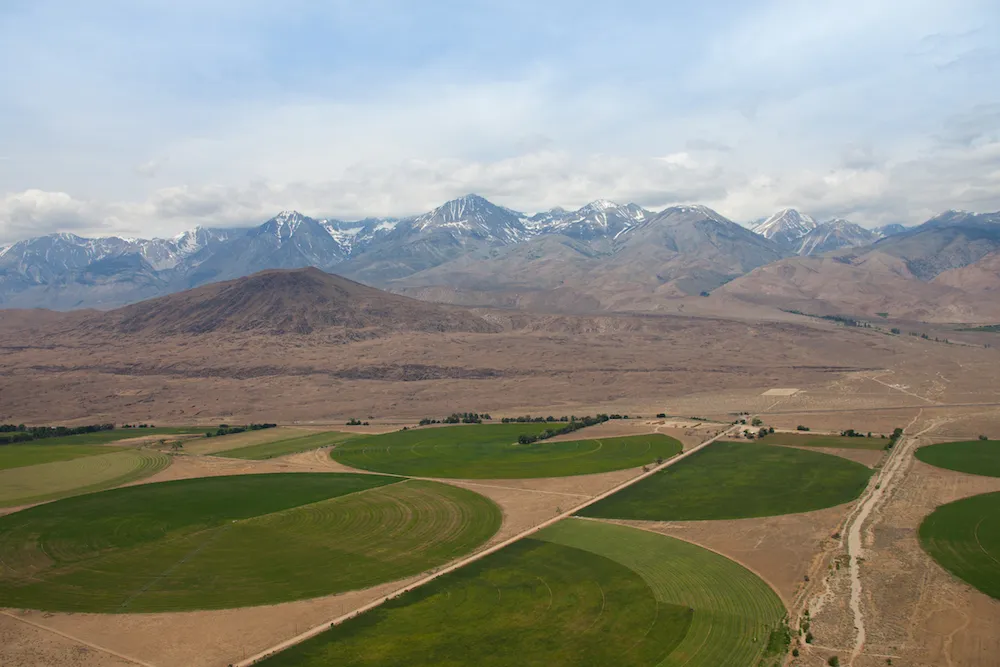Where does the world’s water come from? Rivers, lakes and reservoirs likely come to mind. However, it is easy to overlook the fact that one of the most crucial sources of water is actually groundwater, stored in unseen underground aquifers. Aquifers are bodies of sediment or porous rock which absorb and hold fresh water. Much of their water has taken thousands of years to accumulate from precipitation seeping through the ground, hence the nickname “fossil water.” Much like fossil fuels, fossil water is a precious, volatile, and difficult-to-renew resource that is being bled dry.
In many regions, agriculture relies on groundwater. In continents like North America, nearly 60% of farmland is directly sourced by it. More importantly, civilians need the same water. In California, 6 million people rely on fossil water and some cities, such as Fresno and Davis, are almost completely dependent on it. Furthermore, many locals need to resort to groundwater when other options, like rivers, are exhausted in droughts.
Human demand for groundwater almost always exceeds the rate at which it naturally recharges, an imbalance known as overdraft. Aquifers need lifetimes to recover water as it seeps through the soil, but agricultural demand often sucks it out in a short period. As their levels plunge, deeper wells are needed at a greater cost. When they finally go dry, people simply tap into a different nearby aquifer. This means compounding scarcity, and, when fully exhausted, complete desertion of land.

In the US, this crisis began in the late 20th century, during which agriculture sprawled and wells were drilled with no regard to future scarcity. At one point, the US Geological Survey (USGS) found that water was drawn at nearly 140 times the rate it was being naturally replaced in a few areas, and that it would take nearly 6000 years for a full recovery. Across the world, in some of the most relied-upon agriculture regions (such as Arabia and the upper Ganges), the ratio of overdraft to recovery averages a factor of 20. The consequences were enormous and grossly underestimated: swaths of land bound to become uninhabitable, or already so.
The vast agriculture industry in our home state of California has been exhausting aquifers across the Central Valley. In the early 1900s, wells were only about 50-80 feet deep. Nowadays, farms and communities must drill thousands of feet down to find a source that has not been depleted. This has severe fallout on local populations, such as those of Madera county.
Various wells have gone completely dry in the wake of overdraft, leaving citizens in some towns with no running water and forced to install their own water tanks. When the ground is no longer saturated, it also shrinks down–a process known as subsidence. This leads to land cracking and sinking by the feet, causing property damage. With various inland cities almost completely reliant on groundwater, disastrous consequences are imminent if this issue is ignored.

Beyond the various communities and small farms trying to survive in this situation, this dilemma is the consequence of a larger chain of inequities centered around commercial agriculture and its mass power for upheaval. Large farming companies have too often made the bargain of wringing out groundwater for the sake of profit and production, leaving behind inhospitable land.
Many of these operations support a larger network of environmentally harmful practices. Some fields are dedicated to producing corn for biofuels. Others serve to produce feed for livestock such as cattle, which have their own toll of land destruction and emissions. Solving the “fossil” water crisis means cracking down on the entire system of exploitation. Ingrained in everyday food sourcing, such a significant solution has yet to be found.
Nevertheless, some measures are being taken to tackle this problem. In California, the Sustainable Groundwater Management Act (SGMA) establishes local management with the aim of sustainable pumping by 2040. Plans vary, from switching to dams, encouraging sustainable farming practices, artificially extending aquifers, and even replacing farms with water-retaining grassland.
Many solutions still require taking scarce water from somewhere else. The aquifer issue not only points to its own network of problems, but the water crisis as a whole. Moving forward, it is up to society to muster a transformative effort in campaigning for change in our daily lives and developing new solutions.


